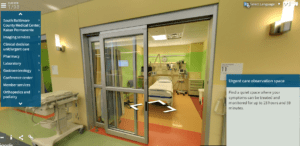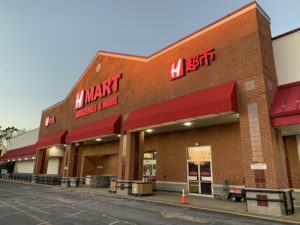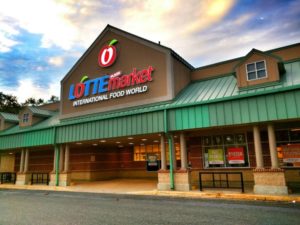Urgent message: While the Washington, DC metro area has the population density, affluence and economic stability to make it attractive for urgent care, an examination of the dynamics and challenges of such a fiercely competitive, crowded market can reveal success strategies that can be applied in any urgent care market.
Alan Ayers, MBA, MAcc is Chief Executive Officer of Velocity Urgent Care and is Practice Management Editor of The Journal of Urgent Care Medicine.
The Urgent Care Association’s 2018 Benchmarking Report revealed that the Washington, DC Metropolitan area (which includes counties in the states of Maryland, Virginia, and West Virginia) is the most saturated Top 10 metro area in the United States for urgent care, with 131 urgent care clinics present in the market.1 Because urgent care operators must be given a Certificate of Need from the District of Columbia to build an urgent care there, however, just seven of these 131 centers are actually in DC—meaning, there are 124 urgent cares located in a handful of surrounding counties.
This peak saturation indicates that urgent care as a healthcare access point is very well-represented across the market. This group of 131 centers feature several well-established, branded urgent care players such as those affiliated with well-respected hospital systems like UVA/Novant, MedStar, Inova, and HCA, as well as private equity-backed “chains” including Patient First, Righttime Medical Care, Concentra, and Choice One.
The Appeal of DC Metro for Urgent Care
The factors that make the Metro Washington DC area attractive to urgent care are many—including the following:
- The Washington, DC Metro area—also known as “DMV” (District/Maryland/Virginia)—is home to 6.2 million people and is the sixth largest market in the United States. And when adding in the Washington–Baltimore corridor, the population swells to 9.5 million people. This large, multistate area holds the population density that urgent care needs to thrive.
- The Washington, DC Metro area is also one of the most affluent and educated regions in the United States, indicating a population that can afford urgent care services based on average household income.
- The Washington, DC Metro area is basically recession-proof, given the vast government-related employment, most of which includes excellent health benefits.
- The Washington, DC Metro area also boasts a growing economy and steady job growth. (Note recent announcements such as Amazon HQ2 moving into Crystal City, Arlington, VA, which also makes the market very appealing for urgent care.)
The Competitive Challenges of DC Metro for Urgent Care
Despite the favorable economic factors, urgent care is not an If you build it, they will come business in any market. On the contrary, especially in saturated markets, consumer utilization behavior leans toward loyalty to the legacy urgent care providers unless there is a compelling reason to try something new. Unlike, say, the outskirts of booming Dallas or Houston where many of the residents are new and open to exploring their options as they establish their healthcare relationships. Metro Washington DC, on the other hand, is an established region with sophisticated consumers whose healthcare needs have been long met.
Additional factors that make Metro Washington DC a competitive market for urgent care include:
- The wide availability of primary care access. Urgent care typically thrives where there are access challenges to healthcare. When patients are tied into primary care, and primary care accepts patients on a walk-in/after-hours basis, they are less likely to utilize urgent care. Metro Washington, DC is awash with primary care. Many international medical graduates flock to the “international city” and as “general practitioners” open their own independent PCP offices, some of which put “urgent care” or “walk-in” on their shingle to draw new patients in off the street (despite not meeting all criteria to be a true urgent care center). In a 2-mile radius in one Northern Virginia suburb there are 129 PCPs listed in one insurance directory. The wide-open availability of primary care must be considered “competition” for urgent care in this market, which causes additional issues when those “walk-in” PCPs charge office visit copays that are less than urgent care rates.
- Medical referrals follow ethnicity more so than geography, and Metro Washington DC is a hugely diverse region. At one Northern Virginia hospital, for example, over 45 languages are spoken. One suburban NoVA shopping center has six supermarkets that cater to Asian, Islamic, Russian, and traditional American clientele. Given the huge ethnic diversity, the large number of international medical graduates, and the consumer behavior of travelling outside their trade area to a doctor who speaks their language, hospital predictive models overestimate patient volumes in the DC area. So, some patients urgent care may be expecting to show up because they live in the area never come.
- Kaiser Permanente has over 800,000 members in the region now, which also must be subtracted when evaluating the available population since Kaiser is a “closed” or “gatekeeper” HMO. Meaning, Kaiser Permanente typically does not reimburse urgent care anywhere other than its own facilities. And to serve its members, Kaiser has flanked Metro DC with a network of extended hours urgent care centers, open until either 1 am or 24 hours, for their members’ convenience. (See callout box.) The independent urgent care operator must treat Kaiser members as “invisible” when estimating the available patient base.
| Kaiser Permanente Advanced Urgent Care
Kaiser Permanente operates an integrated health plan and medical group that attains cost savings for its 800,000 DC-area members by limiting member access to Kaiser facilities. In the Washington market, Kaiser does not own any hospitals and therefore doesn’t have its own emergency departments. To reduce out-of-network ED utilization, which by law must be treated as an in-network benefit, Kaiser instead offers “24-hour Urgent Care PLUS” that includes a CT scanner, IV treatments, cardiac monitoring, and observation capabilities. |
 |
- Whereas Metro Washington DC operating costs like rent, labor, and taxes are higher than the national average, the reimbursement is typically lower. Additionally, because Kaiser Permanente advertises “zero copay” membership plans with the “most affordable premiums,” other payers are pressured to cut costs to compete, resulting in generally lower insurance reimbursements than elsewhere. This is further exacerbated by the glut of primary care, meaning supply exceeds demand, which in turn suppresses reimbursement. According to data reported by the Commonwealth of Virginia, the average adult PCP visit in NoVA is only $77, whereas national averages are just over $100.2,3
- Marketing is difficult in a 6-million person media market, especially for a single center, because advertising in mass media like newspapers, TV, and radio will be cost prohibitive. This means marketing must occur through less expensive digital channels (eg, Google AdWords and Facebook) or grassroots tactics involving schools, churches, sports leagues, and neighborhood associations.
- Great real estate is hard to come by. Urgent care thrives in high-visibility locations in high-traffic areas of “retail draw” that serve as a constant marketing reminder of the center’s services to commuters. Not only is it difficult in a crowded market to find available space to out-position the incumbent competition, but retail space is costly and increasingly shifting to “multiuse.” It is not uncommon now around Metro Washington to see new chain supermarkets on the first floor of an apartment/condo or office building, with parking underneath (such as the Vienna, Virginia Harris Teeter store pictured). This completely changes the conventional shopping center dynamic where an urgent care could achieve high visibility in an endcap or outlot space with parking outside.
| A New Take on ‘Home Shopping’
This Harris Teeter supermarket in Vienna, Virginia is part of a mixed-used retail, residential and office development that’s typical of what’s being built in the “urbanized” suburbs of Washington, DC. A dearth of conventional shopping center endcaps or available land to build a freestanding building, and increased reliance on public transportation, creates an entirely new dynamic for urgent care that has historically relied on site visibility as the most important factor attracting new patients. |
 |
Avenues for Success in a Saturated Market
To gain a foothold in Metro Washington DC (or any other competitive, saturated market), an urgent care operator must have an offering that’s unique, strategic, or special in some way to win consumers away from their existing options. Following are several suggested opportunities toward that end:
- Niche Urgent Care – By carving out a unique niche in your market, your urgent care can appeal to—and siphon away—enough consumers from local competitors. PM Pediatrics, for example, has opened 12 locations that are open 365 days until midnight around Metro Washington DC, and continues to grow because it appeals to the coveted “soccer mom” demographic while featuring a kid-friendly environment and board-certified pediatricians on staff. PM Pediatrics is “different” than many of the incumbent players and therefore perceived as “better” in the eyes of many consumers who will drive past known competitors to utilize them.
- Differentiated Brand – As consumers largely view urgent care providers as “all the same,” creating a differentiated brand can garner loyalty and draw patients away from competitors. As referenced above, creating a niche offering is one path to differentiation. In most cases though, urgent care differentiation will be achieved through innovation, technology, imagination, and finding a way to offer a unique and improved patient experience—ie, becoming the Starbucks, Apple, or “Chick-Fil-A of urgent care through a novel delivery model. (For one good example, read From ZoomCare to Zoom+: What Can Urgent Care Learn? in the JUCM archive.)
- Strategic Real Estate – Through “strategic” real estate (a concept we’ll examine in a future article), it’s possible to physically cut off, intercept, flank, or box in competing urgent care practices such that it reduces the number of patients that make it to the competitors’ center. To out position the competition this way, well thought-out site selection is critical.
Appealing to Ethnically Diverse Prospective Patients
Metro Washington, DC is one of the most ethnically diverse regions in the country—evidenced by the number of ethnic supermarkets like H-Mart and Lotte Market appealing to Asian-Americans. Related, there’s a unique phenomenon around DC in which healthcare referrals follow ethnicity, not geography. Hospitals have analytic models that predict, based on demographics, the need for specialists like oncology and cardiology, so they can staff the hospital accordingly. But around DC, a family living near the hospital with these conditions may never show up at a specialist. That’s because they are likely tied into a PCP who speaks their language, up to 30 miles away. That PCP then refers them to a specialist who speaks their language, who may be as far away as Baltimore or Philadelphia. The same applies to urgent care. If you were sick in Beijing would you seek a traditional Chinese healer or a Western-trained physician? Everyone wants to go to a provider they can relate to. This cultural phenomenon adds another variable that must be considered in business planning for urgent care.


Conclusion
Despite the plethora of competing urgent care options and the glut of PCPs, many urgent care providers are thriving in a crowded Metro Washington DC market. In the face of fierce competition, the Metro Washington DC market dynamic proves that by differentiating the offering, serving a niche consumer, and employing strategic real estate, innovative urgent care operators can still thrive—lessons that can in fact apply to any oversaturated market.
References
- Urgent Care Association. 2018 Benchmarking Report.
- Virginia Health Information. Healthcare pricing transparency. Available at: http://www.vhi.org/HealthcarePricing/default.asphttp://www.vhi.org/HealthcarePricing/default.asp. Accessed February 5, 2020.
- Health Care Cost Institute. Trends in primary care visits. Available at: https://healthcostinstitute.org/hcci-research/trends-in-primary-care-visits. Accessed February 5, 2020.

